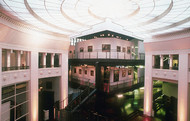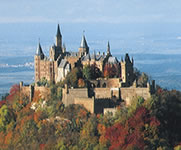Other highlights
Contact
Dortmund, Congress, Tourismus, Service
Königswall 18
44137 Dortmund
Email:
info@dortmund-tourismus.de
Internet:
www.dortmund-tourismus.de
Königswall 18
44137 Dortmund
Email:
info@dortmund-tourismus.de
Internet:
www.dortmund-tourismus.de
Contact
Ausstellungs- und Messe-Ausschuss der Deutschen Wirtschaft e.V. (AUMA)
Littenstraße 9
10179 Berlin
Email:
info@auma.de
Internet:
www.auma-messen.de
Littenstraße 9
10179 Berlin
Email:
info@auma.de
Internet:
www.auma-messen.de
Museums

The Ostwall Art Museum - founded in 1947 - is exclusively dedicated to 20th and 21st century art. The collection includes paintings, sculptures, objets d'art, photos and more than 2,500 graphic prints from the Classical Modern Age to the present day. The important Expressionist collection acquired in the 1950s, featuring such illustrious names as Brücke and Blue Rider, forms the nucleus of the museum, along with works from the Fluxus and Group ZERO movements. The sculpture collection, which includes works by Maillol, Lehmbruck, Archipenko, Moore, Calder, Wotruba, Arp and Spagnulo, as well as the legacy of Bernhard Hoetger, reflects many facets of the development of sculpture to the present day. The museum is also home to one of Germany's first art schools for children. Closed on Mondays – except on public holidays – and on 24, 25 and 31 December and 1 January. Guided tours on request.
» www.museumamostwall.dortmund.de
The 2,000 m² Museum of Natural History has been giving visitors an insight into the diversity of nature for almost a century. The outstanding collection includes around 150,000 insects, 35,000 herbarium sheets and 30,000 minerals, rocks and fossils. Other fascinating exhibits include two life-size models of dinosaurs in the museum's central atrium. The minerals collection has a 650kg rock crystal which sparkles in glorious technicolor. The botany and zoology sections are also well worth a visit, with an aquarium of tropical fish, live bees and terrariums containing spiders, scorpions and other exotic insects. Closed on Mondays – except on public holidays – and on 24, 25 and 31 December and 1 January.
» www.museumfuernaturkunde.dortmund.de
The museum - founded in 1883 - is the oldest of its kind in the Ruhr area and presents precious, rare, typical and ordinary objects in an elegant setting. Themes include "Everyday life and special occasions of yesteryear", "Back to the Stone Age", "Trades and Guilds", "The Biedermann Salon", "The Grand Ball in the Town House". The Roman gold treasure, the Romanesque triumphal cross, the Renaissance rarities collection, silvery cutlery and finest porcelain are among the museum's most precious exhibits. The art collection contains works by leading 18th and 19th century artists such as Caspar David Friedrich, Spitzweg, Feuerbach, Liebermann, Slevogt and Corinth. The exhibition on the history of surveying presents rare geodesic instruments and much more. Closed on Mondays – except on public holidays – and on 24, 25 and 31 December and 1 January.
» www.mkk.dortmund.de
Zollern colliery was built at the turn of the 19th century as a symbol of the industrial strength of the then biggest mining company. When it was opened in 1898 it was regarded as a model coal mine. Abandoned in 1966, the colliery was reopened in 1999 as a museum of the social and cultural history of the Ruhr area. Permanent displays and special exhibitions in the restored surface buildings give visitors an idea of the work of a coal mine at the end of the 19th century. The coal loading terminal, the former mine train station and a pithead frame visitors can climb are some of the attractions. In the housing estate outside the colliery gates visitors can see how miners and their families used to live. The site is generally accessible to the disabled, guided tours are available, closed on Mondays.
» www.lwl.org
The German Cookbook Museum in Dortmund's Westphalia Park opened in 1988 and deals with the subject of kitchen technology and the lives of 19th and 20th century women. A visit to this museum is a low-calorie treat. The smell of Grandma's home cooking, piles of cakes and mountains of roast meat, pies and terrines are enough to tantalise the senses and make the mouth water. The museum's collection centres around the works of the famous cookbook writer Henriette Davidis, who lived in Dortmund from 1856-1876. Dolls house kitchens, ovens and many other historical kitchen appliances provide an insight into the lives of women and girls in the 19th century. The museum also documents changes in kitchen technology up to 1960. Open daily from April to October apart from Mondays, November to March open on Sundays only, closed 24 and 31 December.
» www.museendortmund.de
Travel Planner
Select an option...
Map of Germany
Hotels in Dortmund
Loading



